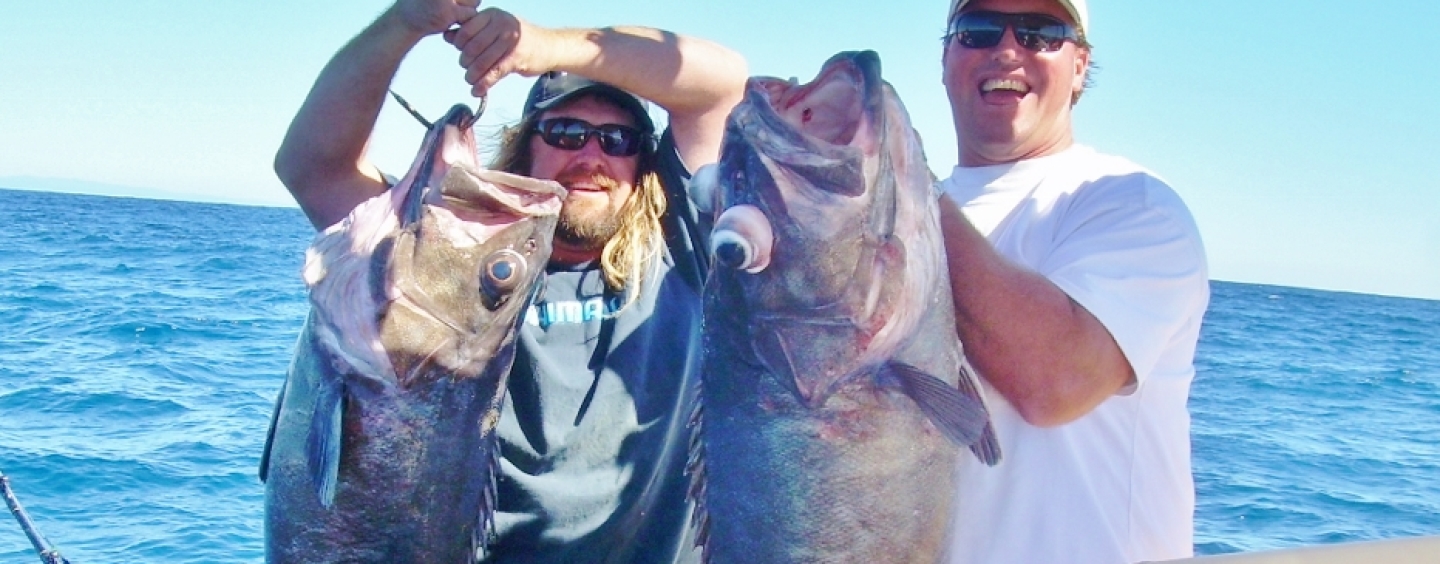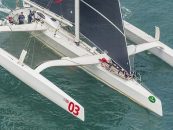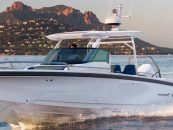Ten miles, twenty miles, thirty miles…Was this trip ever going to end and when were we going to get there? Finally the engine revs are drawn back and the diesel fumes rise from the back deck as the GPS alarm signals our arrival. Tomo yells from the top deck, “We’re here! Now we’ve just got to find the fish and the depths nearly three thousand feet!”
The Gold Coast is known for its diversity, not only for its beaches and waterways, culture and lifestyle—but also for angling. We have just about everything for the angler right here on our back doorstep, from fishing the freshwater impoundments in the hinterland for Australian bass, to wetting a line in the scenic waterways of the Broadwater for a flathead or bream. Out at sea, the reefs east of Surfers Paradise are made up of broken rubbly rocks, pinnacles, ledges, sand and gravel.
For some intrepid adventurers like myself, new grounds had to be found. For many years, hushed words were spoken throughout the fishing fraternity of massive mountains and cliffs rising from the bottom of the ocean in depths of nearly a kilometre. Stories were told of yellowfin tuna the size of a Mini Cooper, leisurely jumping out of the water and marlin feeding among the baitfish schooling up on the surface. Over the next few years, more and more were learned from these anglers—until one day a few fishermen decided to drop a line down.
Now known as the Sea Mounts, these massive underwater structures have become the talk of the tackle trade, with local tackle shops gearing up with imported electric reels capable of handling extreme pressure and drag load. Custom-built rods once used for marlin fishing have been converted into bottom fishing outfits, as the reels are mounted and strapped to the winch seat.
When fishing these depths, a lot of line is required. With the constant advances of braided or non-stretch fishing lines, anglers can easily spool their reels up with three thousand feet of two hundred-pound braid. This kind of fishing does get quite expensive! There is another way out of it, but you have to be fit. The Alvey Reef King is a huge deck winch that easily takes the line capacity. With the use of two handles around the spool, a lot of line can be retrieved with a few turns.
And back to our story… Tomo yells from the top deck again, “I think we’re on it now! Come and have a look at this!” We raced up the stairs, and stared at the sounder as it showed a rise from the bottom, similar to that of Springbrook. A massive edge littered with red blotches indicated fish were down there. And they were thick! After working the current out, Tomo motored the boat up about a kilometre north of the slide. It was time to drop the lines.
The weight I used was a simple SPC fruit tin full of lead, weighing about five kilos. The three-metre paternoster rig consisted of three droppers all containing fluorescent tubing and beads, a large tuna circle hook with either a slab of mullet or squid attached to it, and a couple of decent-sized ball bearing swivels to help eliminate line twists. A strobe light—emitting more flashes than a rave party at 2am—was also attached to the top of the rig. The more light down there, the better the chance of a fish locating your bait.
Several minutes passed and my line was finally at the bottom. The fish wasted no time as the line went tight and I could feel the pressure increasing through my gloves, as more fish were being hooked up. With five kilos of lead, I knew it was going to take some time to get the fish back to the surface.
Fifteen minutes had passed, and no sign of any fish. A few minutes later, my line went slack. The worst fear entered my mind—sharks! Suddenly, about a hundred metres out the back, the fish surfaced all bloated from the change in pressure—the reason for my line going slack, as they torpedoed the last 100 metres to the surface. We quickly reversed the boat back to the fish, and boated a large bass groper and a blue eye trevalla.
Tired, sweaty and exhausted are the three main symptoms you endure while fishing these waters. These grounds are extremely delicate and it wouldn’t take long to decimate them. So when you’re talking about twenty to thirty kilos of prime fish fillets sitting on ice in the esky, a couple of fish is more than enough.
Fishing this depth of water is an unusual experience, and one that is easily topped off with the addition of a few fish. Weather obviously plays a major role out here and should only be visited by experienced skippers who have knowledge of the area. Could the Sea Mounts be the final frontier for reef fishing off the coast? That question has yet to be answered.
By Paul Burt






























